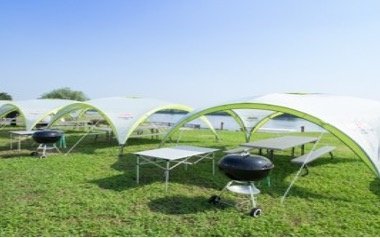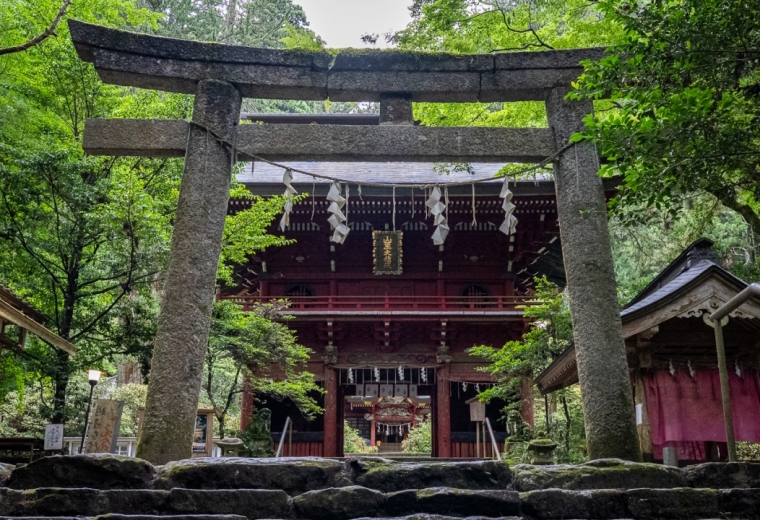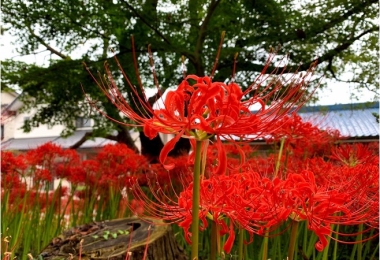Stunning Parades of Portable Shrines! Top 5 Summer Festivals in Ibaraki
Activity
History
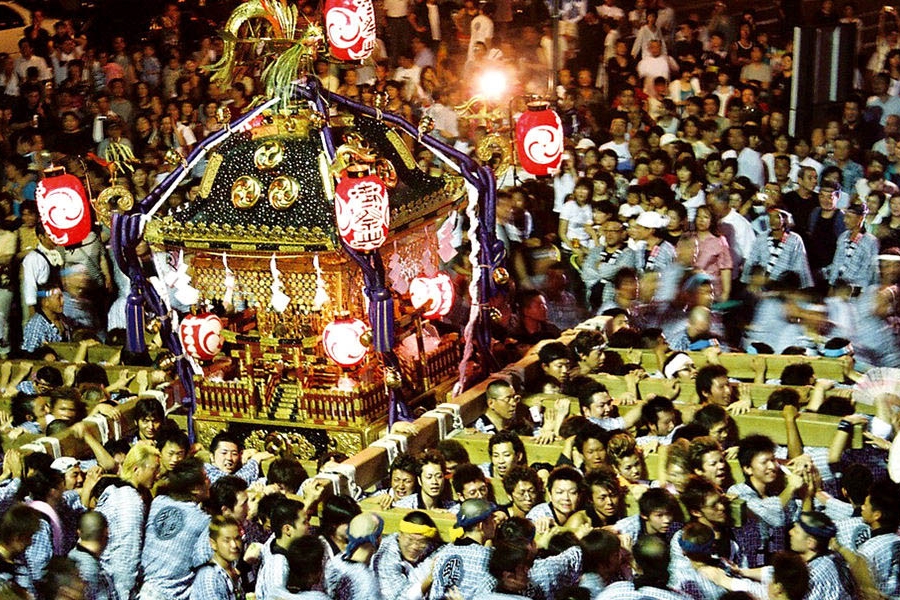
Summer festivals are a beloved annual tradition in Japan. Many unique and spectacular summer festivals steeped in history are found in Ibaraki, which is easily accessible from Tokyo. We have carefully selected five festivals that properly showcase the diversity of these yearly festivities.
In Japan, summer festivals are held in every region of the country. These festivities would involve prayers for an abundant crop, people’s happiness, and expressing gratitude to the gods. Likewise, unique regional features are reflected in these festivals nationwide.
Ibaraki Prefecture, which neighbors Tokyo, is home to many festivals.
Rich in beautiful nature, including rivers and the ocean, Ibaraki is also blessed with an abundance of agricultural products. From ancient times, locals have engaged in a culture of worshipping and praying to gods. There are many shrines and temples where various festivals have developed through these influences.
Some unique festivals feature long processions of mikoshi, or portable shrines (*1), and lanterns. There are also talented performers showcasing extraordinary skills atop a 14-meter high pole.
We will introduce our top five recommended summer festivals held in Ibaraki.
*1 Mikoshi: a portable shrine used to carry a deity on the shoulders of shrine parishioners during a festival.
1. Tsukumai, the Highlight of Yasaka Shrine Gion Festival
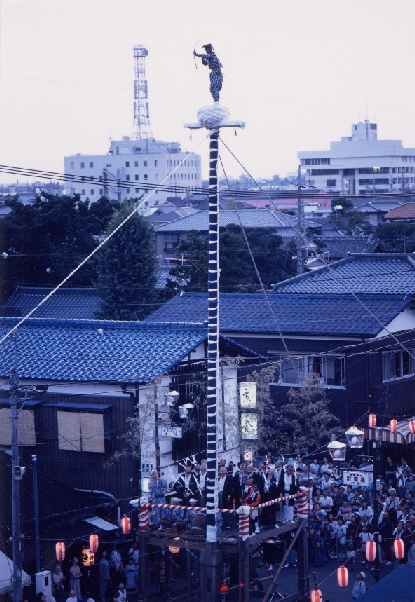
The Yasaka Shrine Gion Festival is held for three days at the end of July in Ibaraki’s southern city of Ryugasaki. One of three unique festivals in the Kanto region, it is designated as an Intangible Folk Cultural Asset by the country and prefecture.
Highlights at the Yasaka Shrine Gion Festival include a special event called Tsukumai, held in the evening on the final day. Taking center stage are two men called “mai-otoko,” dressed in unique costumes and wearing frog masks. Accompanied by the sound of flutes and drums, they climb to the top of a 14-meter tall pole. With no safety harness, they shoot a bow and arrow while doing handstands and performing acrobatic feats.
There are several theories about the origins of Tsukumai. However, it is widely believed to be a performance (magic tricks, acrobatics) from ancient China that was introduced to Japan. It later was associated with Shinto rituals to pray for a bountiful harvest or rain. Beneath the darkening sky, the crowd erupts in big cheers as the mai-otoko perform their daring techniques with ease.
Information
- Location
- Tsukumai, the Highlight of Yasaka Shrine Gion Festival
- Address
- Ryugasaki City, Ne-machi (Tsukumai Dori Street)
Google Map: https://goo.gl/maps/ovQbLy8xzD5ck2Ut7 - Access
- By car: About 20 minutes by car. First, take the Ushiku-Ami IC on the Ken-O Expressway. Then get on Ibaraki Prefectural Route 48(Tsuchiura Ryugasaki) and head to Ryugasaki City.
By train: At Sanuki Station (Joban Line), transfer to the Ryugasaki Line(Kanto Railway) and go as far as Ryugasaki Station. It's about 10 minutes on foot from the station.
- Business Hours
- End of July (Sunday, July 24, 2022, starting around 18:00)
- Contact
- Ryugasaki City Commerce and Tourism 0297-64-1111 (Japanese only)
- Website
- https://www.city.ryugasaki.ibaraki.jp/kanko/bunka/bunkazai/tukumai.html
2. Shimodate Gion Festival
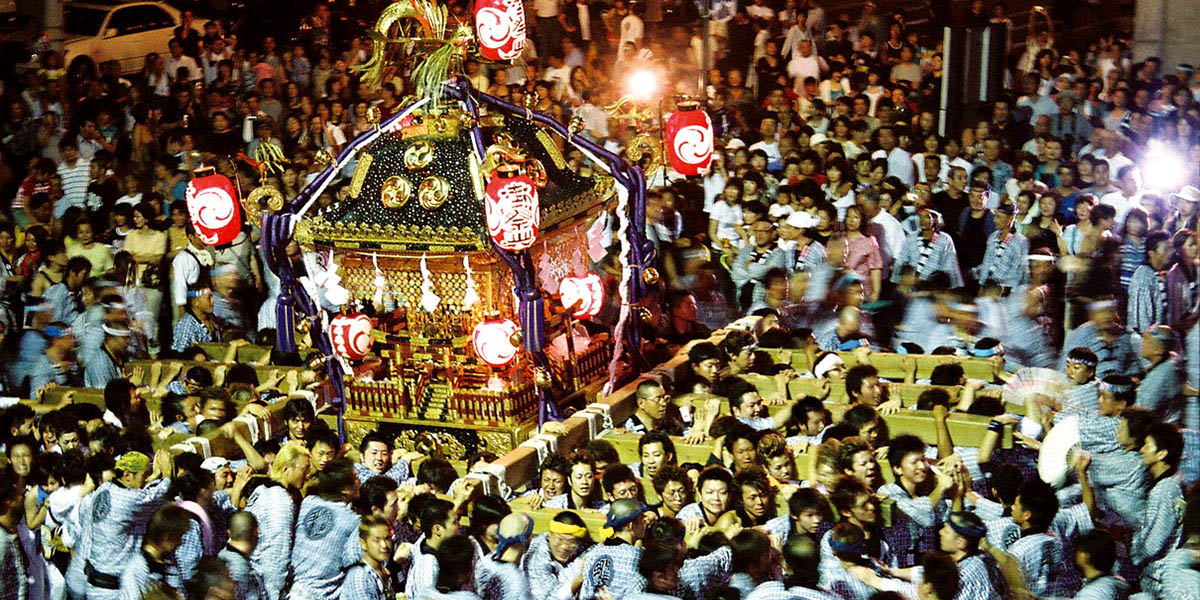
The Shimodate Gion Festival is held in Chikusei City in the western part of Ibaraki. This historic festival is believed to have originated during the Warring States Period (1467-1615).
The festival highlight is the impressive mikoshi (portable shrine) parade. About 30 mikoshi floats are paraded through the streets, including the Heisei-Mikoshi, the heaviest one in Japan, weighing two tons. There’s also the one-ton Meiji-Mikoshi and the Himei-Mikoshi, carried by local women. Every summer, the town comes alive with musical performances and the enthusiastic shouts of participants.
One of the must-see events is Kawatogyo, a purification ceremony held during the festival. Shinto shrine parishioners carrying the mikoshi wash away their impurities in a nearby river. During the ceremony, the heavy portable shrines are lowered into the river, making this a highly unusual sight in Japan.
Information
- Location
- Shimodate Gion Festival
- Address
- Haguro Shrine, the street in front of Shimodate Station, Omachi Street, Gogyo River, Ohashikaryu, etc.
Google Map: https://goo.gl/maps/384cEepRxSdpEQ279 - Access
- By car: About 50 minutes by car. Take the Yawara IC on the Joban Expressway, the Joso IC on the Ken-O Expressway, or the Chikusei IC on the Kita-Kanto Expressway, then proceed to Shimodate City.
By train: Take the JR Mito Line, the Joso Line (Kanto Railway), or the Tsukuba-Moka Line (Moka Railway), and get off at Shimodate Station. - Business Hours
- End of July (July 28-31, 2022)
- Contact
- Chikusei City Tourism Association 0296-20-1160 (Japanese only)
- Website
- http://www.chikuseikanko.jp/index.php?code=11
3. Mito Komon Festival
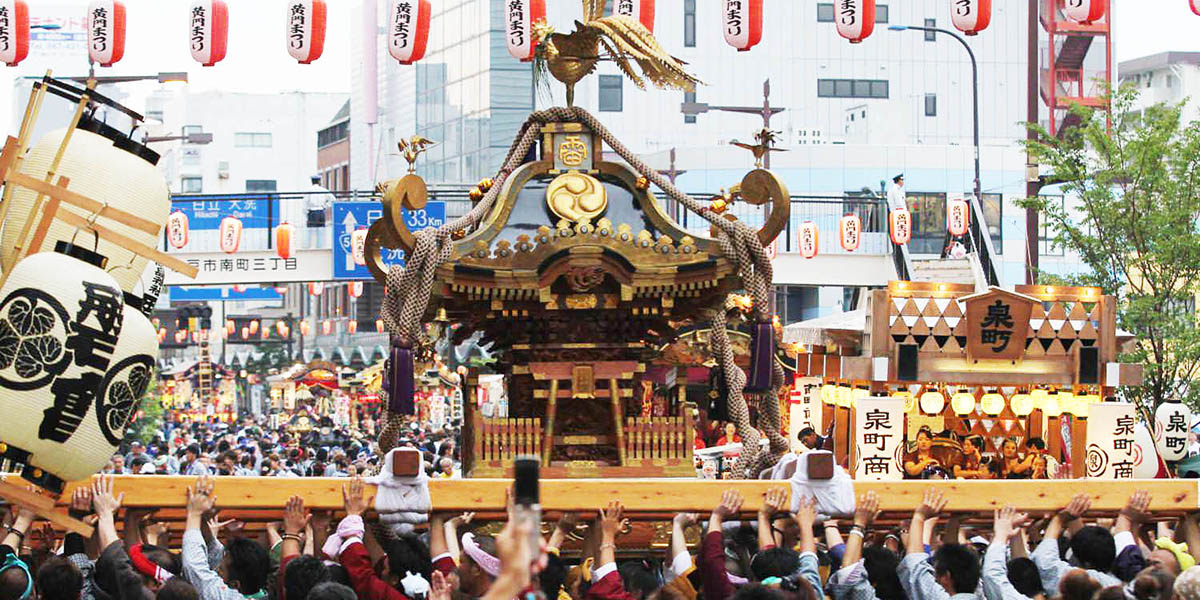
This three-day festival is held in early August in Mito, the prefectural capital of Ibaraki.
The festival highlight includes many lively events along Mito’s main street! During the festivities, the main street around Mito Station is closed to traffic and turns into a pedestrian paradise. This parade honors the historical hero Mito Komon (Tokugawa Mitsukuni). Viewers can see a procession of dashi, or festival floats (*2), and portable shrines alongside a citizens’ carnival. The street is also lined with many stalls and booths. People from all walks of life, including small children to senior citizens, can participate and enjoy the festival.
In tandem with the Mito Komon Festival is a fireworks display at Kairakuen Garden. Japan’s top fireworks expert, Nomura Hanabi Kogyo, sets the sky ablaze with their beautiful pyrotechnics. This is another must-see event!
*Note: Due to COVID-19 and preventive measures for heat stroke, the 2022 edition of the festival has been reduced in scale. This year’s theme is “Creating a Place to Showcase Technology and Culture” and “Recreating the Unique Mood of the Mito Komon Festival.” Please note that the event will be held on a different date.
*2 Dashi: a float adorned with various decorations and pulled along city streets during a festival.
Information
- Location
- Mito Komon Festival
- Address
- Various places in Mito City. In 2022, it will be held at Mito Castle Otemon Square and the Former Ibaraki Prefectural Building (Sannomaru).
Google Map: https://goo.gl/maps/yC9ndvnrYiRWfYyH6 (location may change depending on the year). - Access
- By car: Take the Mito IC on the Joban Expressway, then get on the Ibaraki Prefectural Route 50 to get to Mito City (total distance is about 8 km).
By train: It's a 10-minute walk from Mito Station along the JR Joban Line. - Business Hours
- Usually in August (*in 2022, the event will be held on Saturday, November 5)
- Contact
- Mito Tourism and Convention Bureau 029-224-0441(Japanese only)
- Website
- https://mitokoumon.com/event/experience/komonfes/
4. Ishioka Festival
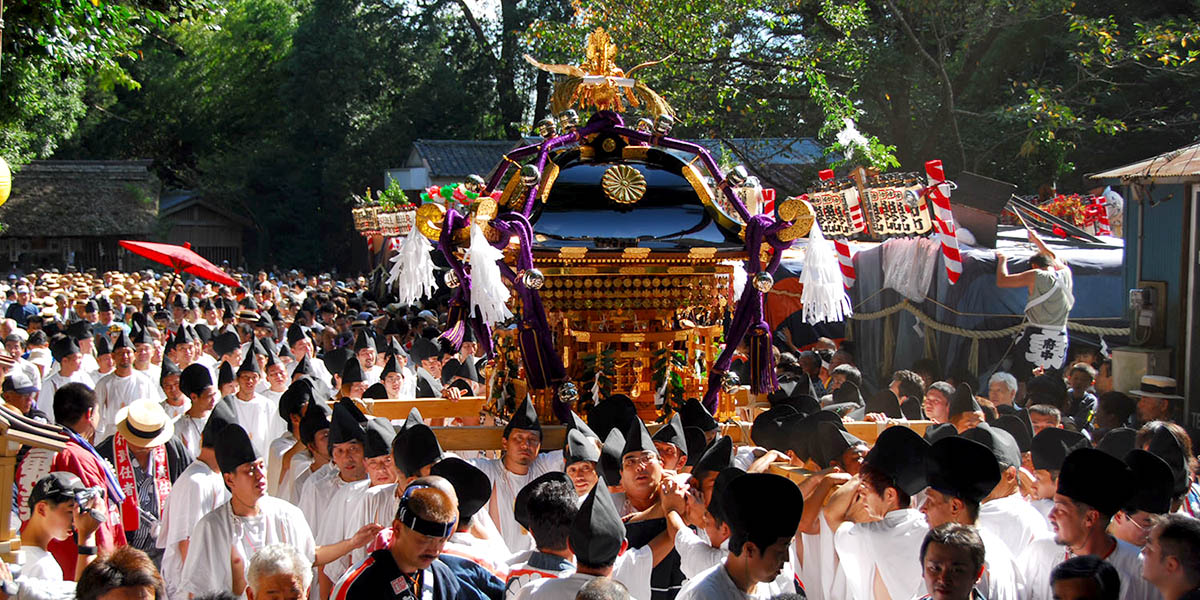
This festival is held at Hitachi-no-Kuni Soshagu Shrine, an ancient shrine established over 1,000 years ago in Mito. The festival is also known as the “Hitachi-no-Kuni Sojagu Grand Festival.” This annual event is very loved by those born and raised in Ishioka, who will often return to their hometown for these festivities no matter what.
During the festival, there’s a parade featuring 50 floats accompanied by lively music. These include mikoshi portable shrines, dashi floats, and even a Horojishi lion dance performed throughout the city. The Horojishi comprises dancers (maite) wearing Ishioka’s unique lion masks and costumes. They escort the festival floats while dancing on the streets. According to legend, the dance helps exterminate plagues and diseases and brings good luck by exorcising demons.
The festival also features sumo wrestling matches and sacred Shinto dances called kagura, which entertains the gods with songs and performances. The climax is the Ishioka Bayashi, or festival music, that accompanies the parade of dashi floats. Japanese festivals have various traditional festivities, including parades with mikoshi portable shrines and dashi floats.
However, it’s rare to see a wide variety of Japanese performing arts in a single event like the Ishioka Festival. This is one reason why many visitors flock here each year.
Information
- Location
- Ishioka Festival
- Address
- In front of Ishioka Station (Joban Line) in the city center and Hitachi-no-kuni Soshagu Shrine.
Google Map: https://goo.gl/maps/9dHziGgGWVULrXZP6 - Access
- By car: About 10 minutes by car. Take the Chiyoda-Ishioka IC on the Joban Expressway, then go along National Route 6 until you reach Ishioka City.
By train: Take the JR Joban Line to Ishioka Station. Events are held near the station. - Business Hours
- Mid-July (July 17-19, 2022)
- Contact
- Ishioka City Tourist Information Center 0299-23-1111 (Japanese only).
- Website
- https://www.ishioka-kankou.com/page/page000138.html
5. Tsukuba Festival
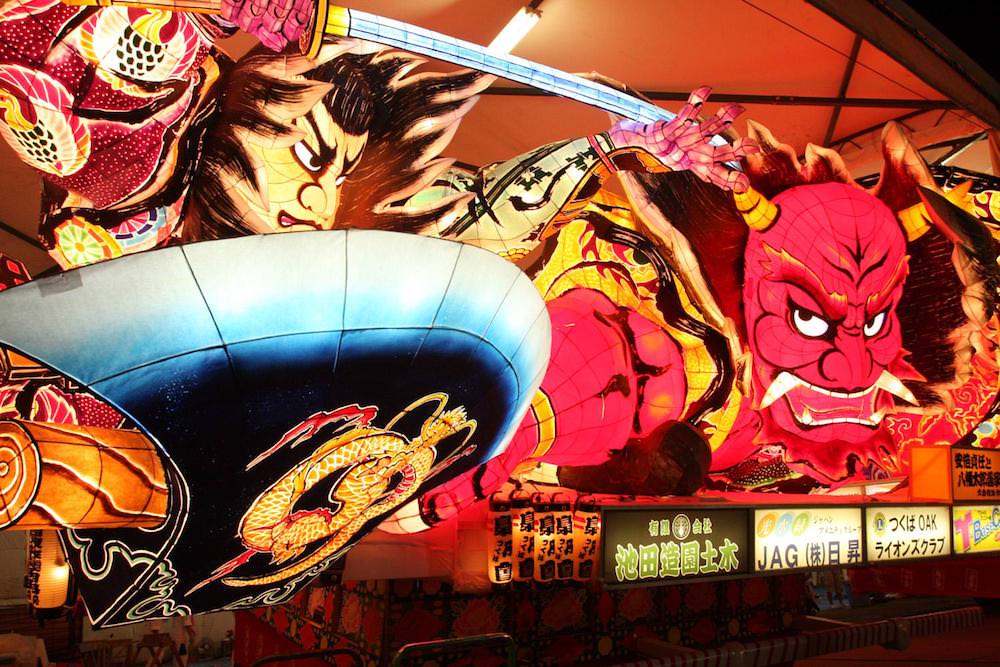
This festival is Tsukuba’s largest event and attracts over 400,000 visitors annually. The city’s concept is “an international metropolis overflowing with nature, culture, and science where residents unite to build a bright future.” During the festival, food stalls feature local delicacies, and the many events include a variety of performances and dances.
The main highlight is a parade showcasing the Tsukuba Manto Mikoshi, the largest portable shrine in Japan. It’s decorated with many lanterns that beautifully illuminate the town at night. In addition, the Nebuta (*3) parade and street performances will allow you to experience first-hand the excitement of a Japanese summer festival.
*3 Nebuta: giant lanterns made in the shape of folding fans, dolls, and animals.
Information
- Location
- Tsukuba Festival
- Address
- Tsukuba Station (Tsukuba Express Line) area
Google Map: https://goo.gl/maps/pbeVYmi9CF5ypJLN7 - Access
- By car: About 15 minutes by car. Take the Sakura-Tsuchiura IC on the Joban Expressway, then head towards Gakuentoshi until you reach Tsukuba City.
By train: Take the Tsukuba Express Line to Tsukuba Station. - Business Hours
- End of August (Saturday, August 27 and Sunday, August 28, 2022)
- Contact
- Festival Tsukuba Headquarters Office 029-883-1111 (Japanese Only)
- Website
- https://www.matsuri-tsukuba.com/
